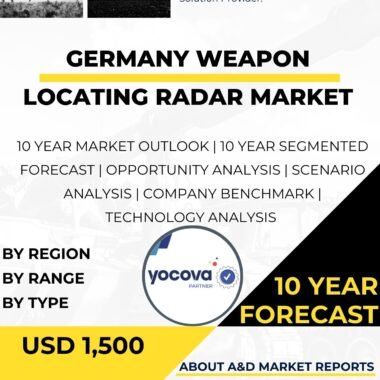Description
Australia CIWS Market Overview
The Close in weapons systems is a rapidly growing defense sector that strengthens the country’s maritime security. Close-In Weapon Systems (CIWS) protect naval vessels from close-range threats such as anti-ship missiles, drones, aircraft, and fast-attack boats. As an island nation with vast maritime interests, Australia continues to invest in modern CIWS technologies to secure its fleet and safeguard its coastline.
Key Drivers of the Australia CIWS Market
Modernization of the Naval Fleet
The Australia CIWS Market is expanding as the ADF upgrades its naval fleet. Advanced CIWS systems improve ship survivability and provide a critical last line of defense against precision-guided threats. These upgrades strengthen Australia’s ability to operate in the Indo-Pacific region.
Indigenous Defense Production
Local industry participation is a major driver of the Australia CIWS Market. Collaboration between the government, defense companies, and research institutions supports the development of CIWS solutions designed for Australia’s maritime requirements. This approach enhances defense capability, creates skilled jobs, and supports technology exports.
Interoperability With Allied Forces
Australia works closely with partners in the Indo-Pacific. CIWS platforms that integrate with allied systems improve joint operations and strengthen multinational maritime security efforts. This compatibility ensures smooth cooperation during training, patrols, and missions.
Major Technologies in the Australia CIWS Market
Gun-Based CIWS Platforms
Gun-based platforms form a key part of the Australia CIWS Market.
The Phalanx CIWS, one of the most widely used systems, features a 20mm M61 Vulcan Gatling gun. Its high rate of fire enables rapid engagement of incoming threats at close range. These systems are effective against missiles, drones, and low-flying aircraft.
Missile-Based CIWS Systems
Missile-based solutions also contribute to the Australia CIWS Market.
The SeaRAM CIWS uses Rolling Airframe Missiles (RAM) to intercept threats with high accuracy. This system provides extended engagement range and enhanced protection for naval vessels.
Sensor and Tracking Technologies
Advanced sensors strengthen the Australia CIWS Market by improving early threat detection. Radar, electro-optical systems, and infrared sensors track incoming threats with high precision. These technologies allow CIWS platforms to respond quickly and effectively.
Challenges in the Australia CIWS Market
Continuous Need for R&D
The Australia CIWS Market faces the challenge of keeping pace with evolving threats. Adversaries are developing faster and more complex anti-ship missiles. Continuous research and development is essential to maintain operational advantage and ensure ship protection.
Budget and Resource Allocation
Balancing CIWS investment with other defense priorities is a key concern. The ADF must manage budget limitations while pursuing modernization of its naval fleet. Effective planning ensures long-term sustainability.
Cybersecurity and System Protection
Modern CIWS platforms rely on secure networks. Protecting these systems from cyber threats is crucial. Strong cybersecurity measures safeguard sensitive data and ensure that CIWS systems operate without disruption.
Future Outlook for the Australia CIWS Market
The Australia CIWS Market is expected to grow as the ADF strengthens its maritime capabilities. Investments in sensors, automation, software upgrades, and missile defense systems will drive future innovation. Cooperation between the government and industry partners will accelerate technology development and support long-term capability enhancement.
Conclusion
The Australia CIWS Market plays a vital role in national defense and maritime security. CIWS systems protect naval vessels, improve mission effectiveness, and support Australia’s strategic interests in the Indo-Pacific region. Growth in this market is driven by modernization, local innovation, and allied interoperability. Addressing challenges in technology development, budgeting, and cybersecurity will ensure that the Australia CIWS Market continues to advance and support the country’s defense goals.




